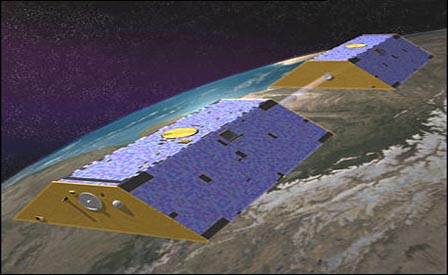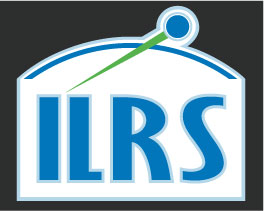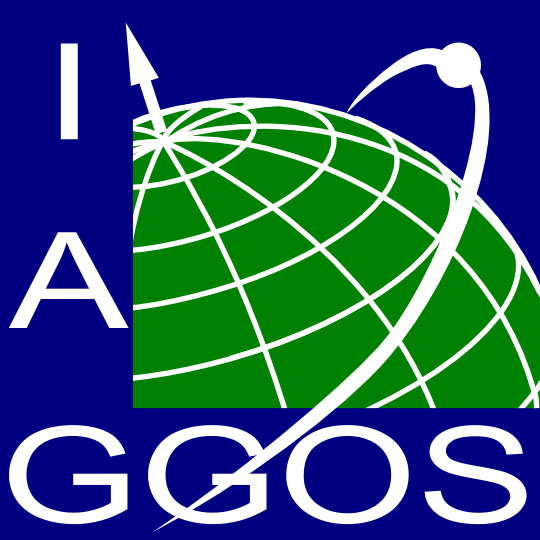
GRACE-A, -B
Jump to: Mission Objectives, Mission Instrumentation, Mission Parameters, Additional Information
Mission Photos:

Courtesy of NASA Earth Observatory
Mission Objectives:
The Gravity Recovery And Climate Experiment (GRACE) is a joint U.S./German satellite mission, which provides global high resolution estimates of the Earth's gravity field and its variability in time. The GRACE mission has two identical spacecrafts flying about 220 kilometers apart in a polar orbit 500 kilometers above the Earth.
GRACE maps the Earth's gravity field by making accurate measurements of the distance between the two satellites, using GPS and a microwave ranging system. The mission provides scientists from all over the world with an efficient and cost-effective way to map the Earth's gravity fields with unprecedented accuracy. The results from this mission have resulted in crucial information about the distribution and flow of mass within the Earth and it's surroundings.
The gravity variations that GRACE studies include: changes due to surface and deep currents in the ocean; runoff and ground water storage on land masses; exchanges between ice sheets or glaciers and the oceans; and variations of mass within the Earth. Another goal of the mission is to create a better profile of the Earth's atmosphere. The results from GRACE will make a huge contribution to the goals of NASA's Earth Science Enterprise, Earth Observation System (EOS) and global climate change studies.
Mission Instrumentation:
Each GRACE spacecraft has the following instrumentation:
- K-band ranging assembly
- GPS receiver
- Star camera
- Accelerometer
- Spacecraft housekeeping and data handling system
- Center of mass trim system
- Attitude and orbit control system
- Retroreflector array
Mission Parameters:
| GRACE-A | GRACE-B | |
| Sponsor: | NASA/GFZ | NASA/GFZ |
| Expected Life: | 5 years | 5 years |
| Primary Applications: | gravity field monitoring | gravity field monitoring |
| Primary SLR Applications: | validation of GPS POD | validation of GPS POD |
| COSPAR ID: | 0201201 or 2002-012A | 0201202 or 2002-012B |
| SIC Code: | 8003 | 8004 |
| Satellite Catalog (NORAD) Number: | 27391 | 27392 |
| Launch Date: | Mar 17, 2002 | Mar 17, 2002 |
| RRA Diameter: | 5 cm | 5 cm |
| RRA Shape: | rectangular | rectangular |
| Reflectors: | 4 corner cubes | 4 corner cubes |
| Orbit: | circular,
near polar, non repeat ground tracks, two satellites will remain in co-planar orbits separated by 220 km |
circular,
near polar, non repeat ground tracks, two satellites will remain in co-planar orbits separated by 220 km |
| Inclination: | 89 degrees | 89 degrees |
| Eccentricity: | <0.005 | <0.005 |
| Perigee: | 485 km (initial) | 485 km (initial) |
| Period: | 90 minutes | 90 minutes |
| NP Bin Size: | 5 seconds | 5 seconds |
| Weight: | 432 Kg | 432 Kg |
Additional Information:
Web sites:
Publications:
- Boisits J., Landskron D., Boehm J. (2020). "VMF3o: the Vienna Mapping Functions for optical frequencies", J. Geodesy, 94(6), 57, DOI: 10.1007/s00190-020-01385-5
- Cordelli E., Vananti A., Schildknecht T. (2020). "Analysis of laser ranges and angular measurements data fusion for space debris orbit determination", Adv. Space Res., 65(1), 419-434, DOI: 10.1016/j.asr.2019.11.009
- Cox, C. M., Lemoine, F. G., Luthcke, S. B., Rowlands, D. D., Chao, B. F., "Time-Variable Gravity From Satellite Laser Ranging and Doppler Measurements: A look at the interannual and annual variations and comparison with GRACE results", AGU Fall Meeting Abstracts A4, 2004.
- Ferrándiz J.M., Modiri S., Belda S., et al. (2020). "Drift of the Earth's Principal Axes of Inertia from GRACE and Satellite Laser Ranging Data", Remote Sensing, 12(2), 314, DOI: 10.3390/rs12020314
- Han, S., Shum, C., Jekeli, C., Kuo, C., Braun, A., "Static and time-variable Earth gravity fields from CHAMP and GRACE", AGU Fall Meeting Abstracts A4, 2003.
- Innerkofler J., Kirchengast G., Schwarz M., Pock C., Jaeggi A., Andres Y., Marquardt C. (2020). "Precise Orbit Determination for Climate Applications of GNSS Radio Occultation including Uncertainty Estimation", Remote Sensing, 12(7), 1180, DOI: 10.3390/rs12071180
- Kang, Z., Nagel, P., Pastor, R., "Precise orbit determination for GRACE", Advances in Space Research 31, 1875-1881, 2003.
- Konig, R., Reigber, C., Neumayer, K. H., Schmidt, R., Zhu, S., Baustert, G., Flechtner, F., Meixner, H., Satellite dynamics of the CHAMP and GRACE leos as revealed from space- and ground-based tracking, Advances in Space Research 31, 1869-1874, 2003.
- Lim H.C., Zhang Z.P., Sung N.P., et al. (2020). "Modeling and Analysis of an Echo Laser Pulse Waveform for the Orientation Determination of Space Debris", Remote Sensing, 12(10), 1659, DOI: 10.3390/rs12101659
- Loomis B.D., Rachlin K.E., Wiese D.N., Landerer F.W., Luthcke S.B. (2020), "Replacing GRACE/GRACE-FO C-30 With Satellite Laser Ranging: Impacts on Antarctic Ice Sheet Mass Change", Geopys. Res. Lett., 47(3), e2019GL085488, DOI: 10.1029/2019GL085488
- Nerem, R. S., Bender, P., Loomis, B., Geiple, J., Watkins, M., Folkner, W., Stephens, M., Delker, T., Leitch, J., Pierce, R., Development of an Interferometric Laser Ranging System for a Follow-On Gravity Mission to GRACE", AGU Fall Meeting Abstracts A787, 2004.
- Nerem, R. S., Bender, P., Watkins, M. M., Folkner, W., Stephens, M., Delker, T., Leitch, J., Pierce, R., Development of an Interferometric Laser Ranging System for a Follow-On Gravity Mission to GRACE", AGU Spring Meeting Abstracts 2, 2004.
- Prochazka I., Bimbova R., Kodet J., Blazej J., Eckl J. (2020). "Photon counting detector package based on InGaAs/InP avalanche structure for laser ranging applications", Review of Scientific Instruments, 91(5), DOI: 10.1063/5.0006516
- Reigber, C., and Tapley, B., "A New Class of Satellites for Earth System Sciences: CHAMP and GRACE", Presentation to 12th International Workshop on Laser Ranging, Matera, Italy, November 13-17, 2000.
- Ries, J., "Prospects for an Improved Lense-Thirring Test with SLR and the GRACE Gravity Mission (Invited)", Presentation to 13th International Workshop on Laser Ranging, Washington, DC, USA, October 7-11, 2002.
- Teixeira da Encarnação J., Save H., Tapley B., Rim HJ. (2020). "Accelerometer Parameterization and the Quality of Gravity Recovery and Climate Experiment Solutions", J. Spacecraft Rockets, 57(4), 740-752, DOI: 10.2514/1.A34639
- Wahr, J., Molenaar, M., and Bryan, F., "Time variability of the Earth's gravity field:Hydrological and oceanic effects and their possible detection using GRACE", J. Geophys. Res. Vol. 103, No. B12, p. 30, 205, 1998.
- Zhu, S., Reigber, C., Konig, R., "Integrated adjustment of CHAMP, GRACE, and GPS data", Journal of Geodesy 78, 103-108, 2004.
- Zielinski, J., "Preliminary Orbit Determination of GRACE Satellites using Laser Ranging Data", Presentation to 13th International Workshop on Laser Ranging, Washington, DC, USA, October 7-11, 2002.




